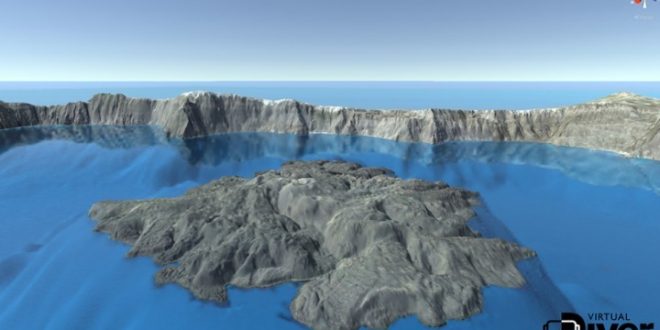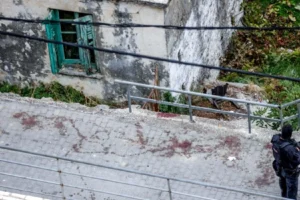The innovative platform VirtualDIVER for virtual underwater experiences targeting the cultural and tourism industries has been developed in cooperation of Greek academics and private companies.
VirtualDIVER will allow people to “travel” and “explore” the magical terrestrial and underwater environment of the island of Santorini, while they comfortably sit on their couch or walk in a park. They will only need special glasses or other devices. with enhanced (AR) and virtual reality (VR) capabilities.
This is the goal of VirtualDIVER, the first integrated interactive platform for underwater and terrestrial virtual experiences for tourism and cultural institutions, developed by Greek researchers.
The VirtualDIVER creators are from the Department of Geology and Geoenvironment of the University of Athens, the National and Kapodistrian University of Athens (Remote Sensing Laboratory), the National Technical University of Athens, the companies TETRAGON (Thessaloniki), Greece, STEFICON (Athens), up2metric (Athens).
Creators made the virtual presentation of VirtualDIVER last Wednesday at the conference of the International Union of Geosciences (EGU) in Vienna.
In particular, the goal in VirtualDIVER is to develop an integrated interactive framework for exploring natural (augmented reality) and virtual (virtual reality) environments in areas of touristic and environmental interest (eg. unique geomorphological structures, shipwrecks, sunken harbors and parks, marine-parks, NATURA areas, etc.) in order to enrich travel experience and promote specific and diverse forms of tourism.
Users will be able to “immerse” in real or fantastic environments with different media (eg, “tablets”, virtual reality glasses, etc.), regardless of whether they are located at the point of the browsing.
“Although, the underwater environment is of great scientific interest regarding all fields of marine research, it has not been exploited broadly yet for cultural and tourism purposes,” EGU said in a statement.
At the same time, technology in the fields of virtual and augmented reality has undergone considerable development by providing technical solutions for environments that their modelling has been problematic or non-operational for a variety of spatial scales.
In this context, business and investment opportunities are currently being created which the VirtualDIVER research strives to exploit.
The proposed solution combines high-resolution data acquired and processed with state-of-the-art technologies(swath mapping systems, underwater vehicles, unmanned aerial vehicles) so as to create a synthetic topographic relief base map and to analyze all its particular geomorphological and ecological structures as well as anthro-pogenic interventions. Through a set of special designed tools for multimedia content management, it is possible to write narrative scenarios and produce interactive experiences in virtual reality.
In this way, users are able to assimilate to real (or even imaginary) environments through different media (e.g., tablets, virtual reality glasses,etc). Moreover, the integration of research knowledge into interactive narrative systems will lead further to the development of innovative research and teaching products to promote the complex, challenging, magnificent underwater environment and also to attract tourists of general or special interest.
Upon its final release, the system will be piloted for the submarine area of the Santorini (Greece) caldera but also for the Mediterranean underwater volcano, Kolumbo, and will enable users to navigate virtually in environments accessible only by underwater vehicles and in cost-intensive, research and scientific missions. EGU said they are strategically targeting Santorini as one of the most touristic destinations in the world, while the Late Bronze Age (Minoan) eruption, which has formed the current caldera 3600 years before, has been screened in international documentaries.
“The unique geomorphological scenery of the inner slopes of the caldera, which continues on the seabed, the particular settlement development as well as the geological history and evolution ofthe volcano are the themes of the interactive narrative of the platform,” the statement said.
In addition, the research outcomes will be interpreted in a popular way through the developed platform while the systematic data collection methodology and the virtual representation have been designed to be scalable and applicable to any other coastal environment of touristic and/or cultural interest.












